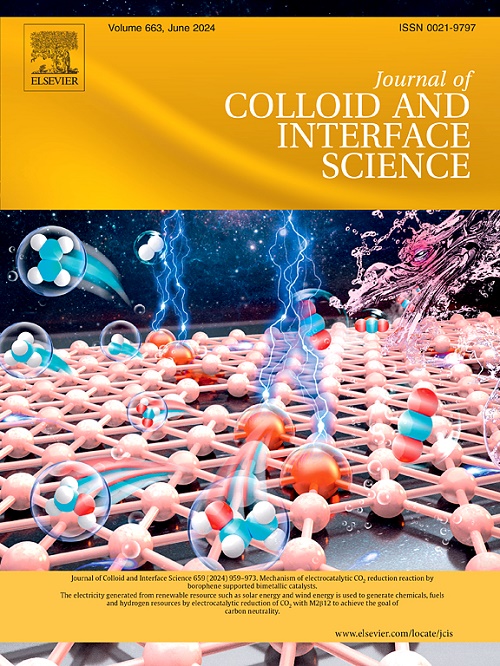Constructing NiCo-hydroxide/Ni Mott-Schottky heterostructure electrocatalyst for enhanced alkaline hydrogen evolution reaction by inducing interfacial electron redistribution
IF 9.4
1区 化学
Q1 CHEMISTRY, PHYSICAL
引用次数: 0
Abstract
Designing and developing inexpensive and efficient catalysts for alkaline hydrogen evolution reaction (HER) applications is essential for the advancement of renewable energy. However, the inadequate charge transfer and higher energy barriers in the alkaline HER process resulted in limited HER efficiency. Herein, a novel highly efficient Mott-Schottky heterostructure catalyst was synthesized by rationally combining metallic Ni and nickel–cobalt layered double hydroxide (NiCo-LDH). The work function difference between NiCo-LDH and metallic Ni naturally drives rapid electron transfer at the heterointerface, ultimately resulting in the formation of a built-in electric field at the NiCo-LDH/Ni heterointerface. The in-built electric field can induce electron redistribution at the heterointerface, thereby modifying the electronic structure of the catalyst. This accelerates electron transfer and optimizes the adsorption strength between the catalyst and the intermediates, leading to enhanced conductivity and reduced reaction energy barriers for the HER process. Notably, the indepth mechanism of the NiCo-LDH/Ni electrocatalyst in HER was analyzed by in situ Raman and Density-functional theory (DFT) calculations. The results demonstrated that the rapid dissociation of water, optimized electronic structure, and diminished reaction barriers contributed to the enhanced HER activity. Accordingly, the well-designed NiCo-LDH/Ni/NF exhibited a favorable performance for HER with an overpotential of only 93 mV at 10 mA cm−2 together with a desirable long-time durability for 100 h. This study provides new insights into enhancing the intrinsic catalytic activity of the catalyst by modulating its electronic structure and broadens the application of Mott-Schottky heterojunctions in the field of HER.

求助全文
约1分钟内获得全文
求助全文
来源期刊
CiteScore
16.10
自引率
7.10%
发文量
2568
审稿时长
2 months
期刊介绍:
The Journal of Colloid and Interface Science publishes original research findings on the fundamental principles of colloid and interface science, as well as innovative applications in various fields. The criteria for publication include impact, quality, novelty, and originality.
Emphasis:
The journal emphasizes fundamental scientific innovation within the following categories:
A.Colloidal Materials and Nanomaterials
B.Soft Colloidal and Self-Assembly Systems
C.Adsorption, Catalysis, and Electrochemistry
D.Interfacial Processes, Capillarity, and Wetting
E.Biomaterials and Nanomedicine
F.Energy Conversion and Storage, and Environmental Technologies

 求助内容:
求助内容: 应助结果提醒方式:
应助结果提醒方式:


